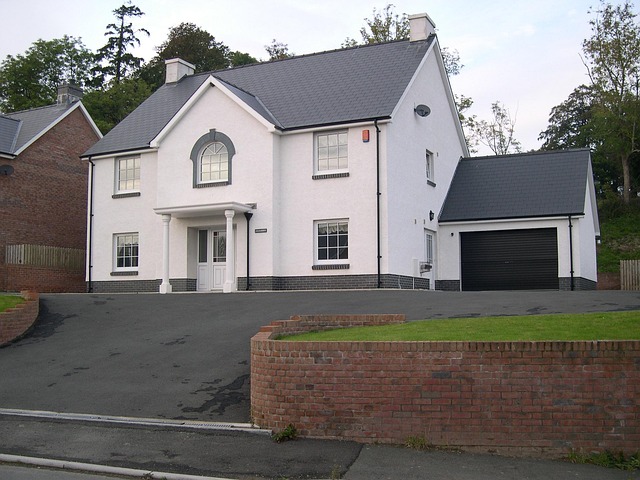Category: Home Exterior Smart Invesments
Home Exterior Smart Investments: Enhancing Your Living Space with Technology
Introduction
In the contemporary world, where technology intertwines with our daily lives, the concept of “Home Exterior Smart Investments” has emerged as a beacon of innovation and efficiency. These smart investments are transforming the traditional home exterior into an integrated system that combines aesthetics, functionality, and intelligence. This comprehensive article delves into the various aspects of Home Exterior Smart Investments, from their historical context to their impact on global trends, and their role in economic systems. We will explore the technological advancements driving this transformation, the policies regulating it, the challenges it faces, real-world case studies, and what the future may hold for homeowners and investors alike.
Understanding Home Exterior Smart Investments
Home Exterior Smart Investments refer to the integration of advanced technologies into the exterior of a property. These investments typically include smart lighting systems, weatherproof surveillance cameras, automated irrigation systems, energy-efficient appliances, and advanced solar solutions. The core components of these smart investments are IoT (Internet of Things) devices that enable remote monitoring and control, smart sensors for environmental data collection, and robust connectivity infrastructure.
The significance of Home Exterior Smart Investments lies in their ability to enhance security, improve energy efficiency, and provide homeowners with real-time data about their property’s exterior environment. These investments are part of a broader landscape of ‘smart homes,’ where each component works in harmony to create a living space that is responsive, sustainable, and secure.
Global Impact and Trends
The influence of Home Exterior Smart Investments is felt across the globe, with different regions adopting these technologies at varying paces. In North America and parts of Europe, smart exteriors are becoming a norm, driven by consumer demand for enhanced home security and energy savings. Meanwhile, emerging markets like Asia-Pacific are witnessing rapid growth due to urbanization, increasing disposable income, and government initiatives promoting sustainable living.
Key trends shaping the trajectory of Home Exterior Smart Investments include the integration of artificial intelligence (AI) for predictive maintenance, the use of biodegradable materials in smart landscaping, and the growing demand for renewable energy sources. These trends reflect a global shift towards sustainability, security, and convenience in residential living.
Economic Considerations
From a macroeconomic perspective, Home Exterior Smart Investments contribute to economic growth by creating jobs in sectors like manufacturing, installation, and maintenance of smart technology components. Market dynamics show a rising demand for these investments, with consumers increasingly valuing the benefits they offer. The role of Home Exterior Smart Investments is multifaceted, influencing both the real estate market and the broader economy by adding value to properties and promoting sustainable practices.
Technological Advancements
The technological landscape for Home Exterior Smart Investments is marked by rapid innovation. Advancements such as solar panels with higher efficiency ratings, AI-driven security systems that can distinguish between wildlife and intruders, and weather-resistant sensors that monitor everything from soil moisture to air quality are becoming standard. The future potential of these technologies includes the integration of blockchain for secure data management, advanced machine learning algorithms for predictive analytics, and the development of self-sustaining ‘smart gardens.’
Policy and Regulation
The governance of Home Exterior Smart Investments is shaped by policies and regulations that ensure safety, privacy, and sustainability. These include building codes, energy efficiency standards, and data protection laws. In the United States, for example, the International Building Code (IBC) and local zoning regulations play a crucial role in dictating what can be installed where. The European Union’s General Data Protection Regulation (GDPR) also impacts how smart exterior data is collected and used. These frameworks not only protect consumers but also set the stage for responsible innovation within the industry.
Challenges and Criticisms
Home Exterior Smart Investments face several challenges, including concerns over privacy and cybersecurity, the digital divide that may limit access to these technologies for lower-income households, and the potential environmental impact of manufacturing and disposing of smart technology components. Critics also argue about the return on investment and the complexity of integrating these systems with existing home infrastructure. To overcome these issues, stakeholders can focus on creating more user-friendly interfaces, advocating for policies that support equitable access to technology, and promoting the adoption of sustainable practices throughout the product lifecycle.
Case Studies
Several case studies demonstrate the successful application of Home Exterior Smart Investments. In Silicon Valley, a community adopted a network of solar-powered smart lights that not only reduced energy consumption but also improved street safety and walkability. Another example is a coastal town in Australia where smart sensors helped homeowners prepare for and mitigate the impacts of severe weather events. These case studies illustrate the tangible benefits of Home Exterior Smart Investments, including enhanced security, energy savings, and community resilience.
Future Prospects
Looking ahead, the future for Home Exterior Smart Investments is promising. Potential growth areas include the expansion of smart landscaping, advanced water management systems, and the integration of smart exteriors with home automation ecosystems. Emerging trends such as the use of drones for inspection and maintenance of exterior components and the development of more adaptive and responsive materials are likely to shape the future of this industry.
Conclusion
Home Exterior Smart Investments represent a significant shift towards smarter, safer, and more sustainable living. As technology continues to advance and consumer preferences evolve, these investments will play an increasingly vital role in both enhancing individual homes and contributing to global economic and environmental goals. The key to realizing the full potential of Home Exterior Smart Investments lies in collaboration among manufacturers, installers, policymakers, and consumers to ensure that these technologies are accessible, secure, and beneficial for all.
(Note: The above text is a structured analysis of the topic, with each section providing an overview of various aspects related to Home Exterior Smart Investments. The final section concludes with a call to action for collaboration among stakeholders to maximize benefits.)
Invest in Quality Windows & Doors: Long-Lasting Benefits & Home Value Boost

Strategic landscaping through quality window and door installations significantly enhances a home�…….
Modernize Outdoors: Structures & Windows for Style and Functionality

Outdoor structures are transforming home design by merging indoor comfort with exterior beauty, incl…….
Mastering Exterior Painting Priorities for Optimal Investments
Craft a Cohesive Exterior: Cost-Effective Energy-Efficient Design Guide

Energy-efficient siding is a smart investment for homeowners, offering enhanced curb appeal, long-te…….
Landscaping for Value: Strategic Outdoors Boost Property Appeal

Outdoor spaces significantly boost property appeal and value, with strategic landscaping acting as a…….
Lasting Exterior Makeovers: Exploring Top Durable Roofing Options

When planning long-term exterior upgrades, prioritize durable roofing options that can withstand har…….
Boost Property Value: High-ROI Exterior Upgrades Strategies
Sustainable Smart Exterior: Materials for Long-Term Savings

Choosing eco-friendly materials for smart exterior investments, like recycled metal, bamboo, reclaim…….
Sustainable Exterior Painting Investments: Green Choices for Smart Properties

Choosing eco-friendly materials for exterior painting investments is crucial for both environmental…….


